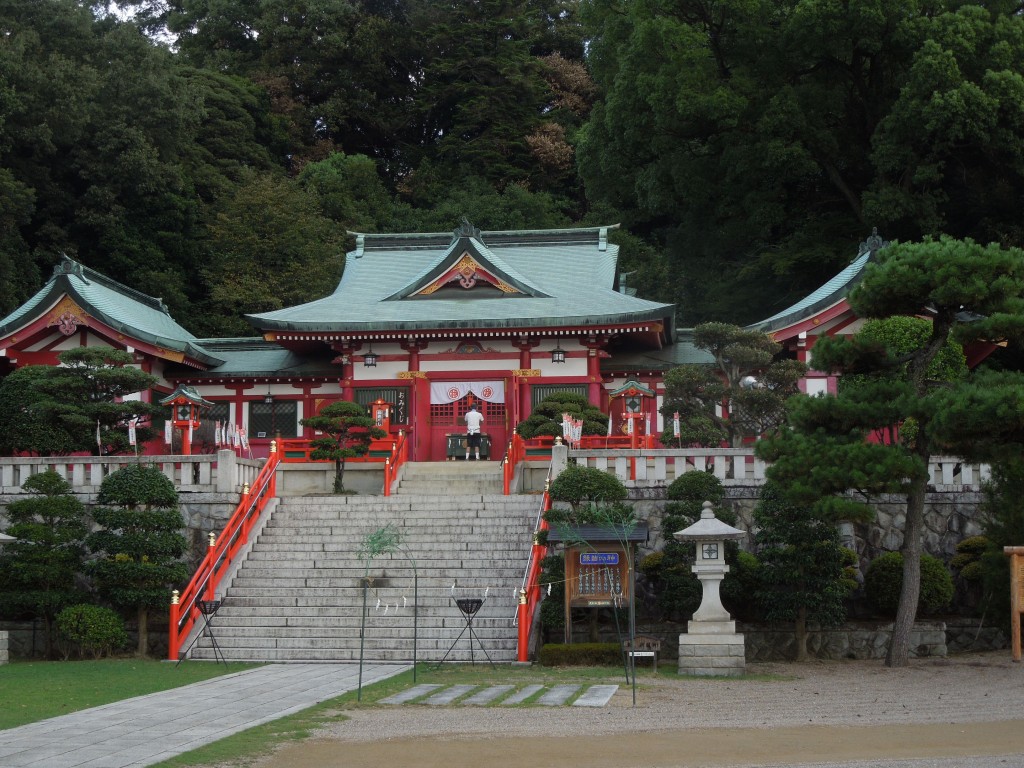
The pristine Orihime Shrine, overlooking the town of Ashikaga
Shogunate hometown
I found myself recently in the small town of Ashikaga in Tochigi Prefecture. The name is famous in Japanese history as being the family name of the Muromachi shoguns, and sure enough this is where they came from – one more connection with Kyoto in the Deep North. Near the city centre is a statue of the man who started the shogunate dynasty, Ashikaga Takauji (1305-1358).
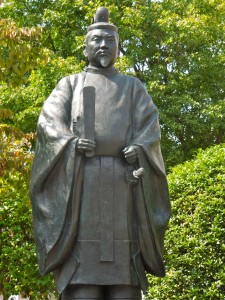
Ashikaga Takauji, founder of the shogunate dynasty
On the site of an early Ashikaga residence now stands a spacious Shingon temple called Banna-ji, founded in the early thirteenth century. Like the Tendai temples of Tohoku, it retains strong syncretic aspects. Indeed, it’s often said that of all the Buddhist sects, Shingon is the closest in spirit to Shinto.
Many of the temple’s features echo those of a shrine. There’s a temizuya water basin for washing one’s hands. There’s a sacred tree with a shimenawa rice rope. And there are ema and omikuji fortune slips.
The temple also hosts a small Inari shrine, a Daikoku hall and a place for praying for easy childbirth. Indeed, if it wasn’t for the statue of Kukai (Kobo Daishi), you might forget while strolling the grounds that you’re in a temple at all.
Orihime Shrine
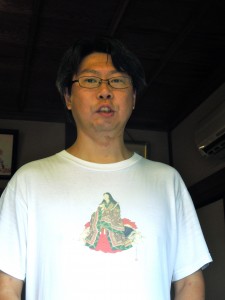
An off-duty priest with Orihime, the Weaver Princess, displayed on his T-shirt
The main shrine in Ashikaga is surprisingly recent. It was built in 1879 to guard over the town’s once vibrant textile industry – which is why it’s known as the Weaver Princess Shrine. The current buildings only date from 1937, after a fire devastated the original shrine, and as one might expect from a modern shrine the atmosphere is pristine yet lacking the allure of antiquity.
Since the shrine is the departure point for hiking in nearby Orihime Park, many of the people crossing the precincts are intent on their daily exercise. There are several young females too, for the shrine’s kami include a male and female couple, Yachichihime and Amenomihoko no mikoto, which means there is a llvely trade in ‘enmusubi‘ (good connections).
Some of the young are also drawn by the fame of a popular manga and anime character called Orihime, and the shrine has seized on the opportunity to produce ema votive tablets designed for fans. I noticed that one of the priests however boasted a T-shirt, which displayed the ancestral kami in more traditional manner.
Weaving and early religion had a close connection, and it’s worth noting that Amaterasu herself is a weaver when we first meet her in Kojiki. Michael Como, professor of Shinto at Columbia University, has written interestingly of the parallels with the silkworm in her story (see below), and it ‘ties in’ with the threads and knots in ancient religions that bind humans with the divine. Here at Ashikaga the Weaver Princess continues to spin her web and to capture the imagination of a new generation.
**********************************************************************
Wikipedia writes that “Orihime Inoue is a fictional character in the anime and manga series Bleach created by Tite Kubo. She is a classmate and friend of Ichigo Kurosaki, the main character of the series. Like many other friends of Ichigo, she quickly develops spiritual powers of her own after Ichigo becomes a Soul Reaper. Through the series, Orihime learns about Ichigo’s duties as a Soul Reaper and decides to accompany him when he goes to Soul Society to save Rukia Kuchiki.”
Michael Como Weaving and Binding: Immigrant Gods and Female Immortals in Ancient Japan (University of Hawaii Press, 2009)
*********************************************************************
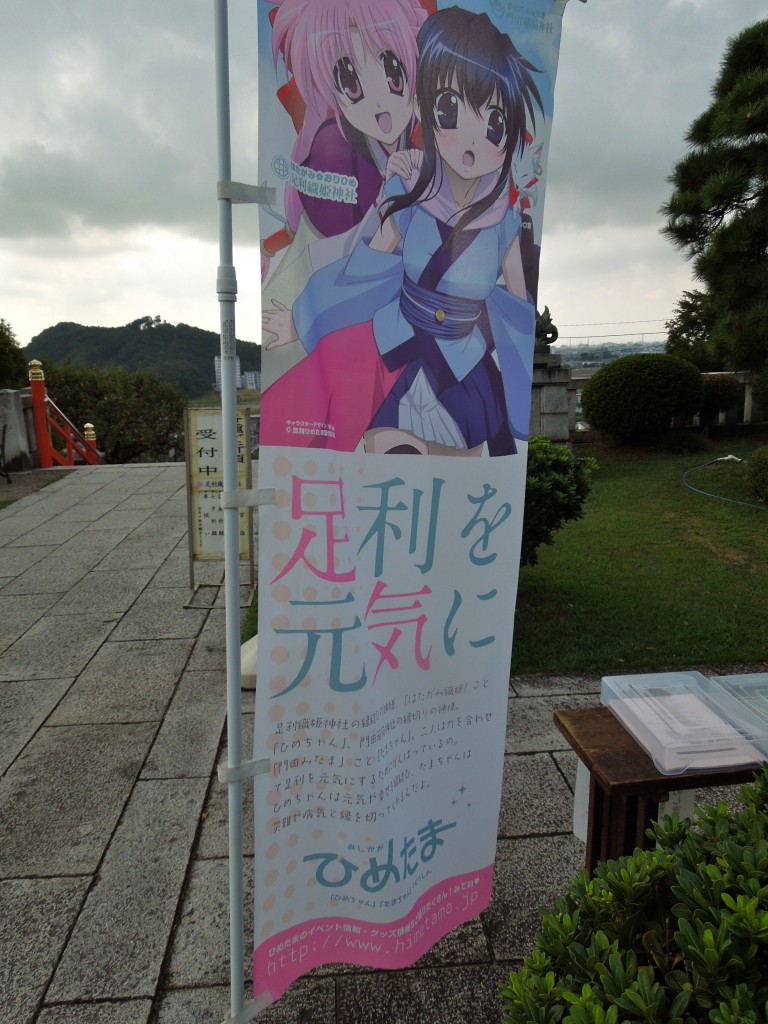
A banner advertising the shrine's connection with the anime and manga character
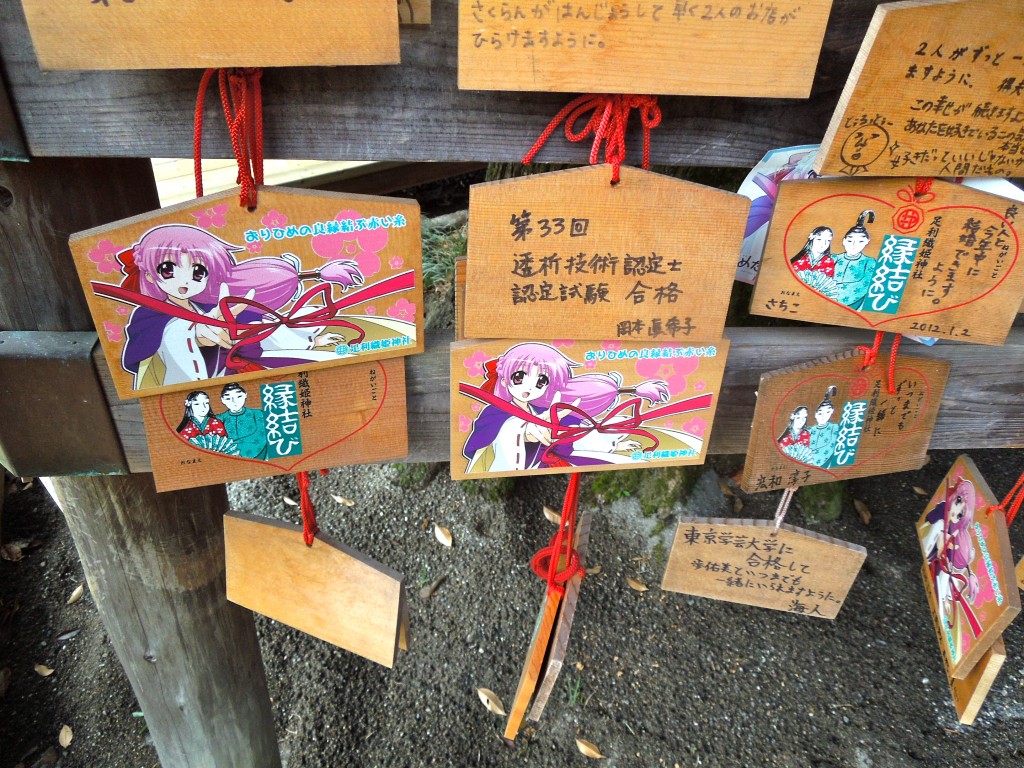
Prayer tablets displaying an anime character with the name of Orihime
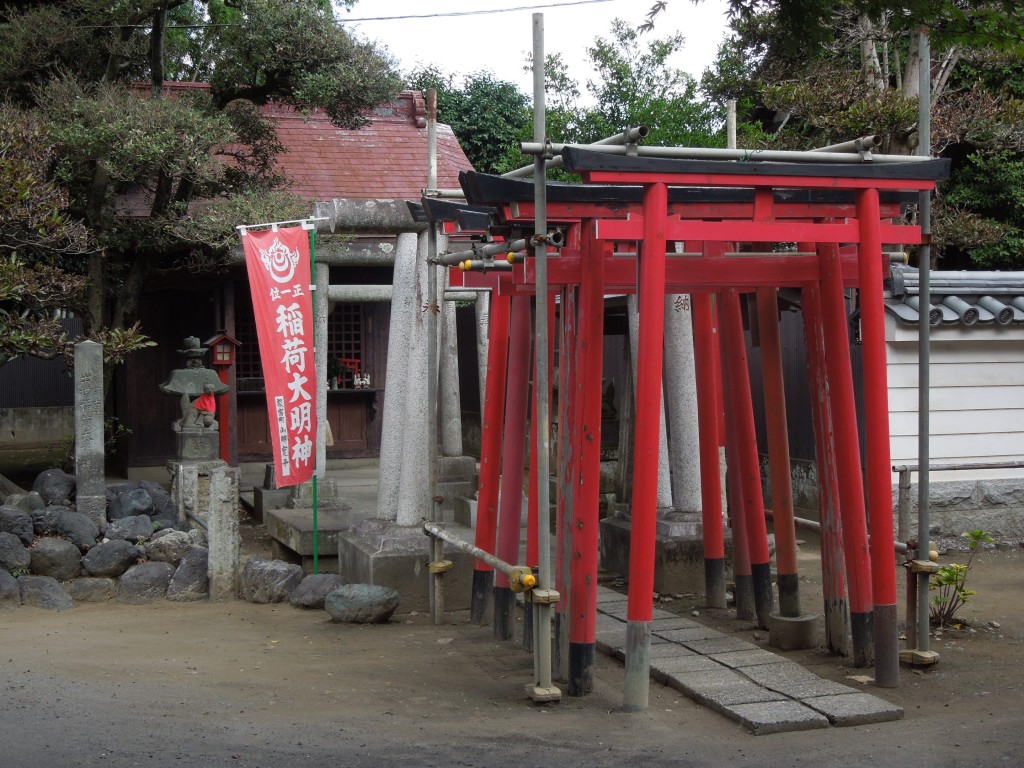
Inari Shrine in the Shingon Temple of Banna-ji
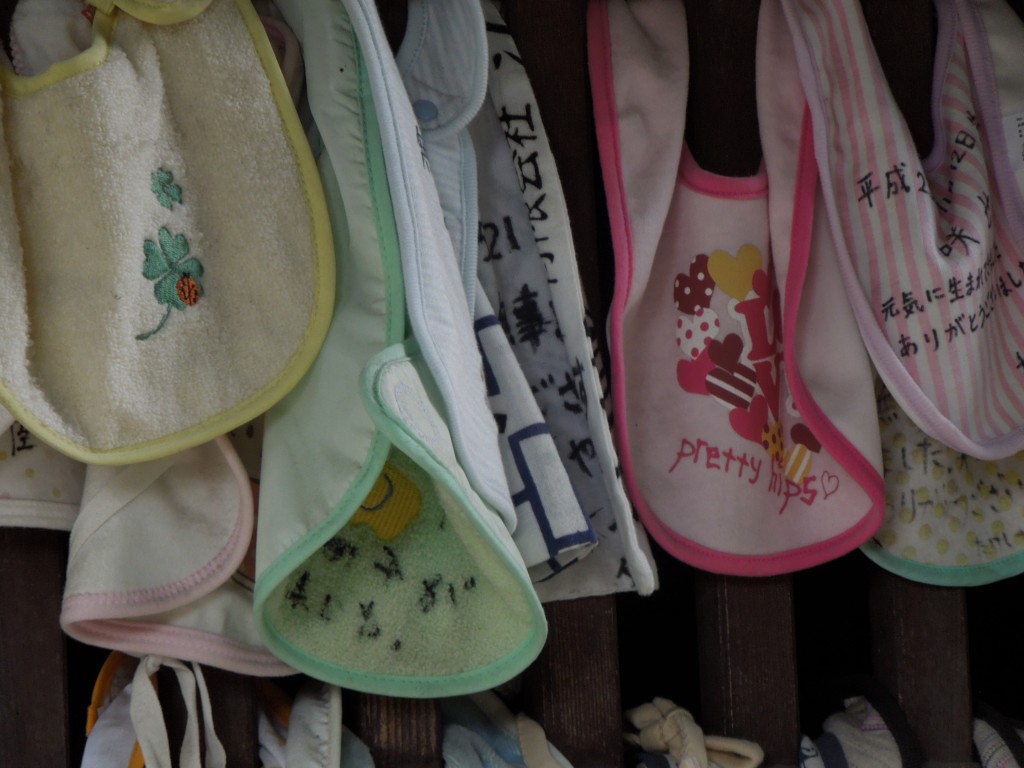
The Shingon temple of Banna-ji seems to have taken on many of the traditional aspects of Shinto, such as a sacred tree, ema tablets, a shrine to Daikoku, and here prayers for a good birth. Bib offerings are placed in gratitude for prayers answered – including one in English proclaiming saucily 'Pretty hips'.

Leave a Reply